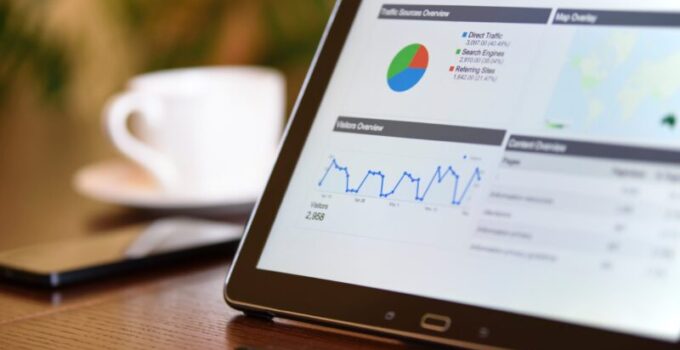Marketing isn’t an exact science, but its strategies and campaigns are based on data. Without consumer insights, the creative genius behind famous and emotionally impactful ads wouldn’t exist. Businesses with an online presence have the advantage of built-in analytics that measure behaviors, such as website interaction time.
Other insights, including organic versus paid traffic, allow marketers to determine the value of their campaigns. But what about companies with a store presence or a chain of locations scattered throughout several cities and states? Surely these businesses can gather consumer data through research companies, focus groups, and surveys. However, the information isn’t as fresh as real-time behaviors.
Wi-Fi analytics, which captures consumers’ in-store visits and interactions as they occur, helps brick-and-mortar business owners gather valuable real-time data. With this information, marketing plans and campaigns for retailers have more solid legs to stand on. Here’s how you can start using Wi-Fi analytics to drive effective marketing strategies.
Page Contents
Understand Your General Market

Source: forbes.com
It’s well-known that all kinds of stores and locations offer free Wi-Fi. Anyone can connect to public networks at hotels, coffee shops, school campuses, restaurants, and grocery stores. From a consumer’s perspective, complimentary internet service is unquestionably a perk. Just because someone’s away from home doesn’t mean they can or want to disconnect from the digital world.
But for retail locations, setting up a public Wi-Fi connection is an opportunity to do more than install access points. With a smart small business Wi-Fi solution, such as Plume WorkPass, you can collect anonymous market data. This includes information about how many visitors your store gets and whether they’ve been in before. Anonymous data also includes how long people stay and what days and time slots see the most traffic.
Your Wi-Fi network gathers this information through customers’ mobile devices, including smartphones and laptops. Each device has a unique address that sends out signals to your network as it looks for a Wi-Fi connection. Anonymous data doesn’t require any action or permission on the customer’s part. When analyzed as a whole, the information reveals the general behaviors of your customer base.
You can use foot traffic volume to launch promotions that are redeemable during periods of high volume. Dwell times might indicate a need to expand your products to accommodate the preferences of customers who stay longer. Differences between store locations could reveal variances between consumer needs and responses to ad campaigns. Use those distinctions to better define your market segments and create new messaging.
Personalize Customer Outreach

Source: blog.influenceandco.com
Some forms of personalization can feel intrusive. Most people find it creepy when a platform like Facebook shows a product ad related to an earlier conversation. And if you’re on LinkedIn, you’ve probably gotten the odd email from a B2B sales rep you’ve never heard of. These emails sometimes incorporate personal details the rep gleaned from your profile and can come across as presumptuous.
Despite the occasional qualm, most consumers appreciate personalized outreach and in-store experiences. A whopping 91% of shoppers are more likely to purchase from brands that provide relevant offers and product recommendations. About 50% of consumers are willing to share their information to receive personalized deals. Content that isn’t tailored prevents 66% of shoppers from buying, and 36% think retailers need to step up their personalization game.
Non-anonymous data captured via a public Wi-Fi network gives you the information you need to create personalized experiences and messaging. A captive portal collects specific customers’ information when they want to use your store’s internet service. This data can be as simple as the consumer’s name, email address, and residential ZIP code. Some businesses opt to collect a little more information, such as date of birth and content preferences for future communication.
With consumer profiles, it’s easier to implement loyalty program incentives based on information like purchase histories. You may notice a visitor usually stops in during the early-morning hours on weekdays to buy the same product. Assuming this product is a particular beverage, you can offer discounts and rewards tied to that item.
Make More Informed Media Decisions

Source: medium.com
Based on how different customers use your network, you’ll learn what digital platforms and websites they visit. Wi-Fi analytics also show how many of your store’s visitors use iOS versus Android or Apple versus Windows devices. Small details like these might seem insignificant, but they could impact where and how you advertise.
Say you know a consumer segment from a specific ZIP code spends more time on YouTube than other platforms. You might try spending additional ad dollars on online video ads. Using methods like geotargeting will allow you to concentrate on reaching audiences from specific markets. You can also target users who resemble existing customers in that ZIP code. This resemblance could include demographics like age and gender or interests gleaned from browsing data.
As a campaign measurement tool, Wi-Fi analytics has the power to help you determine the effectiveness of your efforts. Maybe you increased the number of ads shown to targeted users on video content platforms. Using a combination of anonymous and consumer profile data, you can see whether that caused foot traffic to increase at your store.
New loyalty program sign-ups and captive portal data may show sales went up within the targeted demographic. Now you’ve confirmed your outreach campaign did what you intended it to do. You can continue to direct dollars toward that platform and demographic versus other media and segments that aren’t as fruitful.
Conclusion
A good marketing strategy is built on consumer data. Although intuition plays a role in the creative side of advertising, you can’t design a game plan with hunches.
Wi-Fi analytics give brick-and-mortar businesses real-time information so marketers can become more agile in their approach. Understanding your market better, knowing your customers, and discovering effective ways to reach them will boost your marketing strategy’s success.





